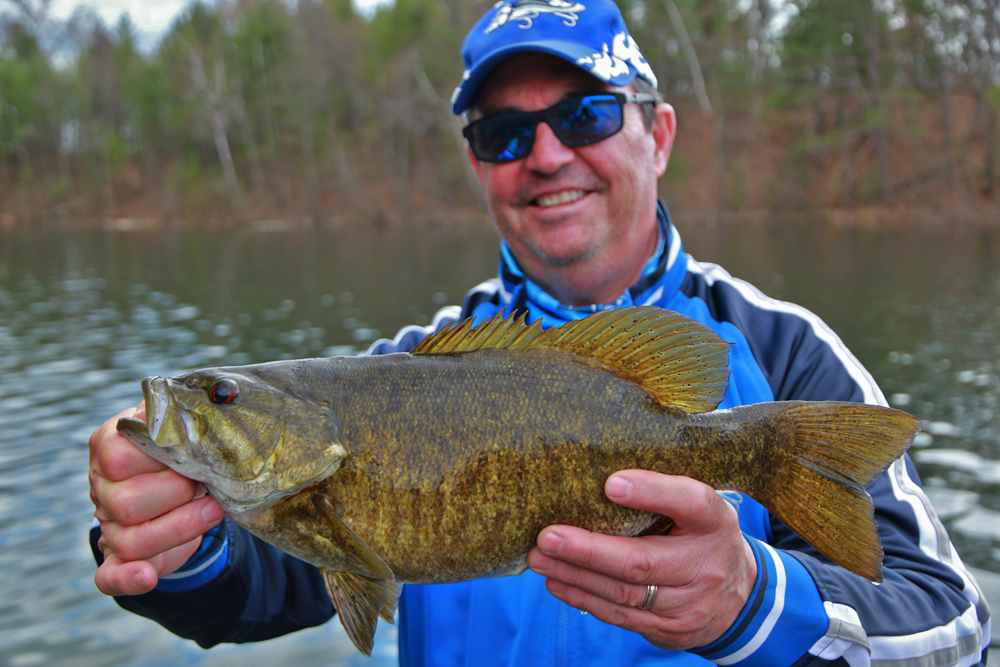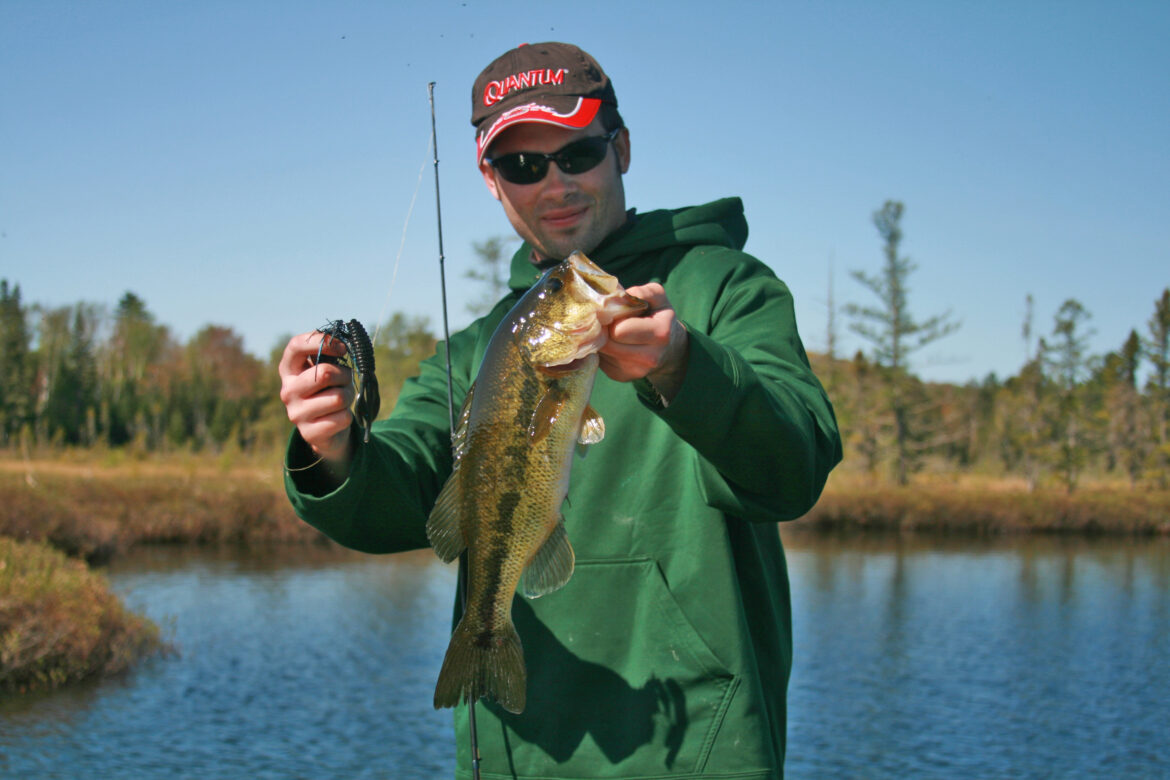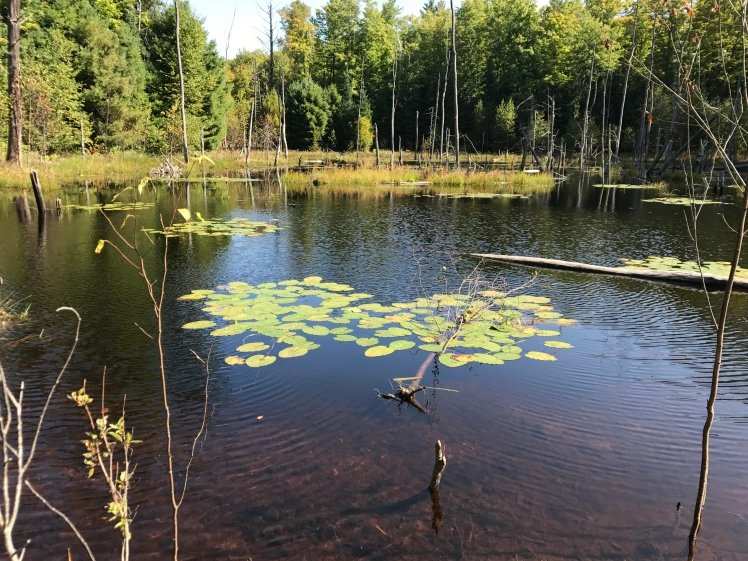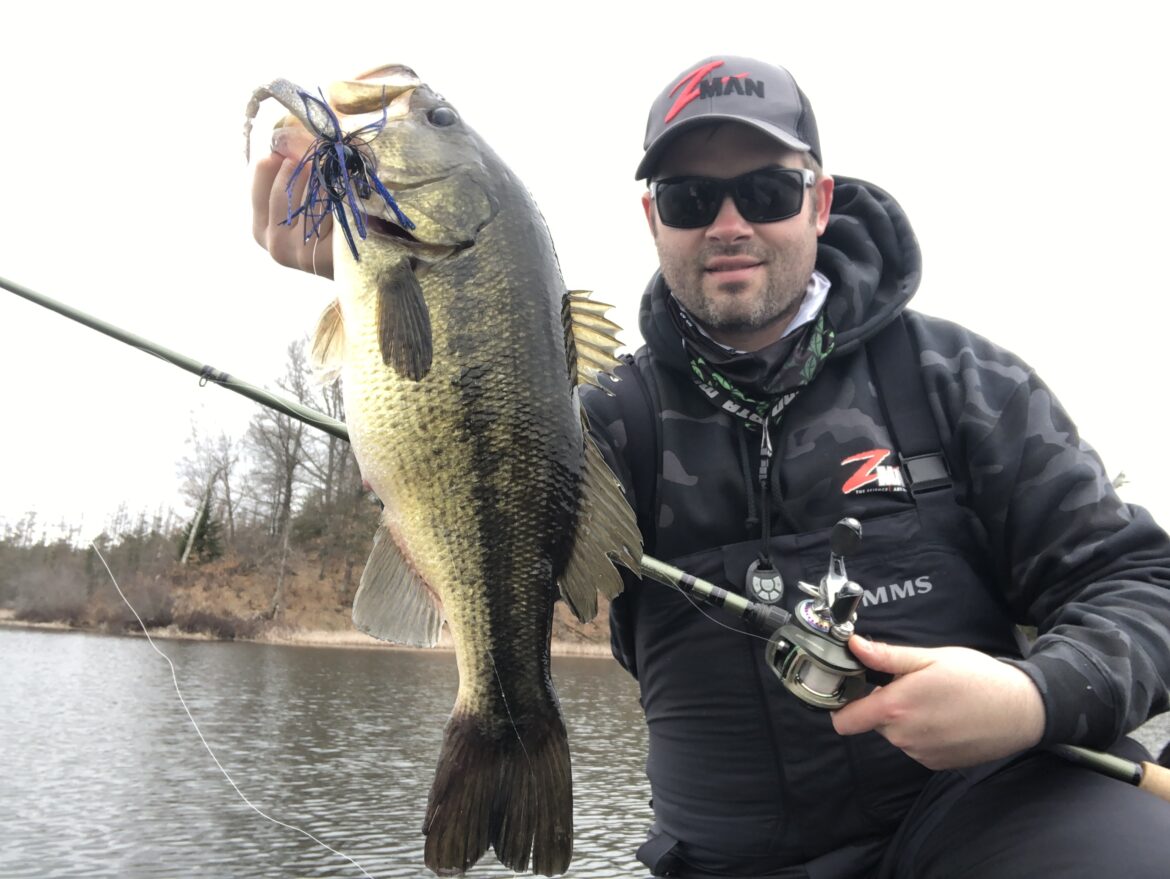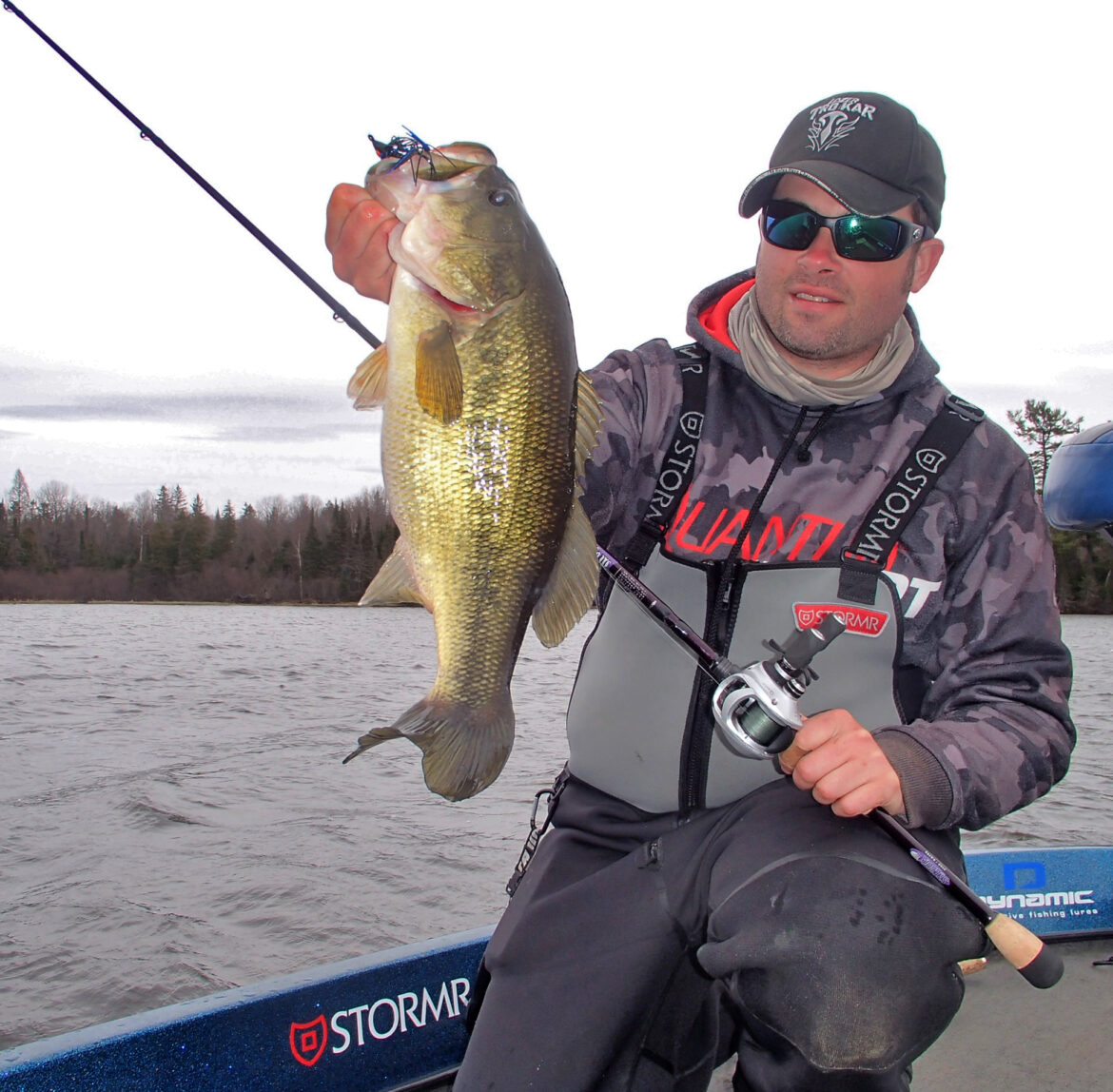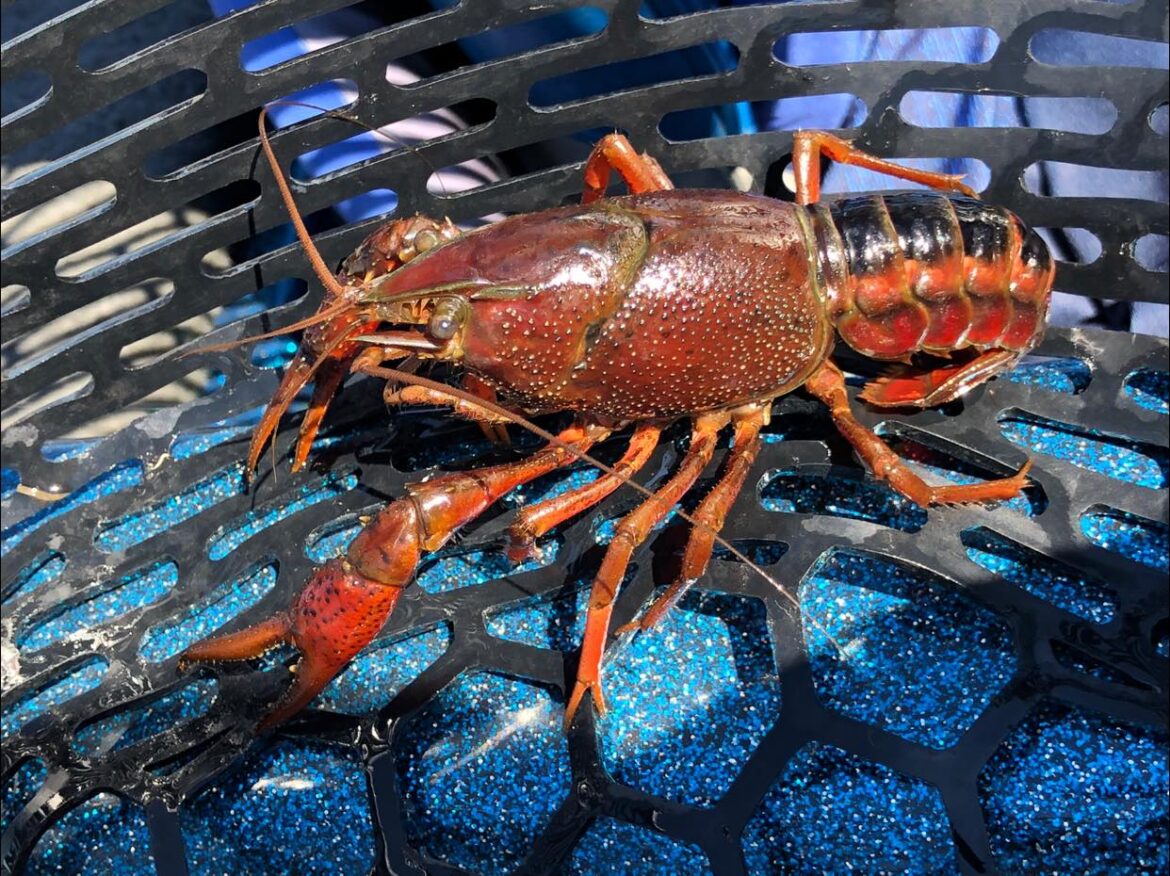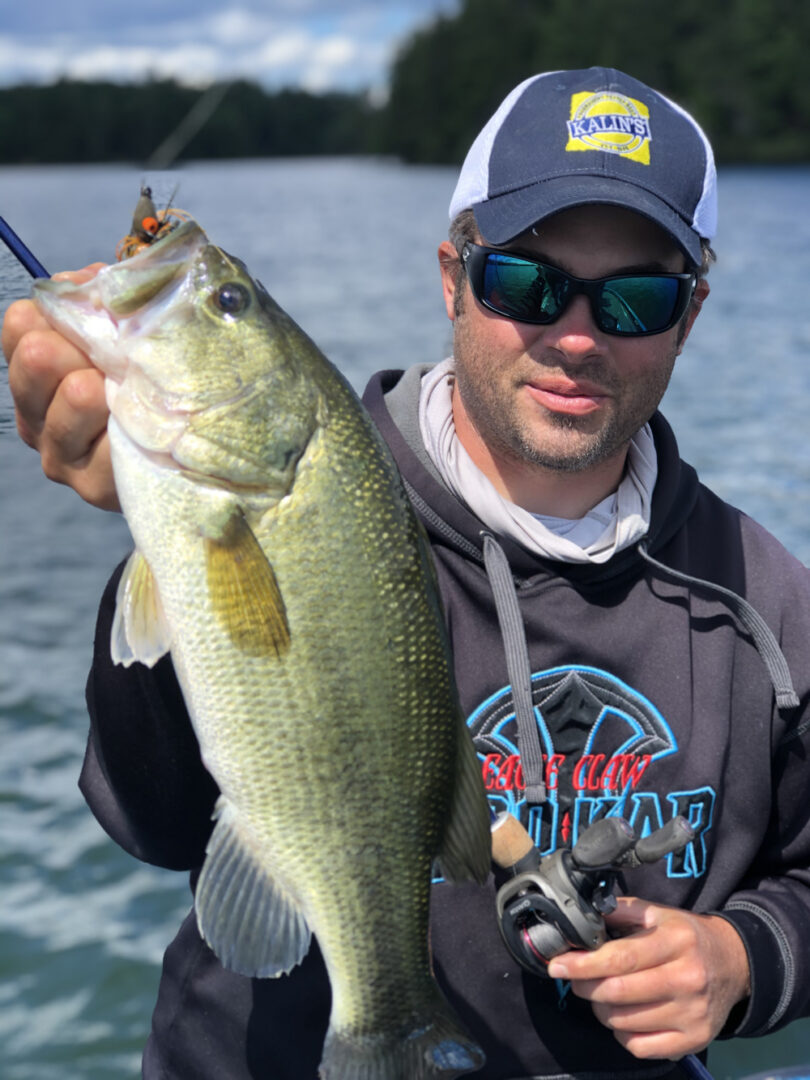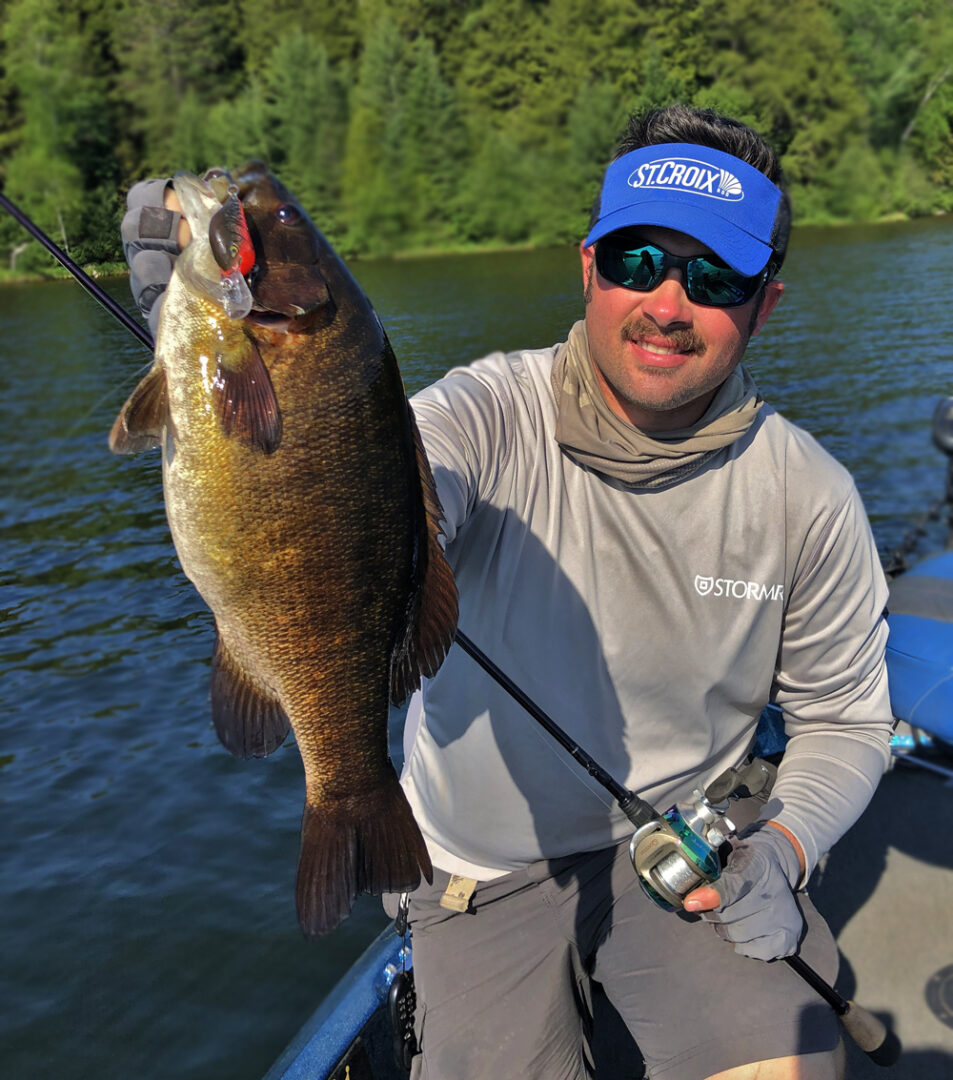After ice-out, smallmouth undertake structural migrations from wintering sites to their staging locations, utilizing the lake’s contours and breaklines as their trail in order to reach these temporary destinations. Where they stage and hold until water temperature becomes ideal for invading the shallows will often be situated within a close range from their spawning
Specific lake locations that conduct heat are instrumental in scoring early season bass fishing success. The areas that warm quickest are determined by underwater structure and the lake’s geography. Typically, shallow muddy bays with exposure to the southern skies, and have inflows, will warm the fastest.
When it comes to catching spring largemouths, aggressive and vibration-emitting horizontal presentations are lure choice guidelines to follow. In some other instances such as colder water and adverse conditions, slower and more relaxed works too. Lure selection for everything you should be doing during pre-spawn is going to be moving and reactionary, nonetheless.
Shallow water cover fishing and largemouth extraction calls for power fishing with heavier rod and reel set-ups and braided lines. With casting targets abound, the major strategy will be pitching and flipping jigs and plastics into the cover. If you plan to cover water throughout shallow bays and along shorelines, the secondary strategy will
The ideal smallmouth bass crankbait is a smaller, compact, realistic, and noisy representation of bottom-scurrying prey. In this case, it’s their favorite, the crayfish. In mid June as smallmouths conclude their spawn, crayfish also awaken. Power cranking with a shallow diving crankbait will score big numbers of feisty, hungry post-spawn fish that are cruising


